It’s true that compiling a short list of the world’s largest creatures might be challenging because the term “big” seems rather subjective. This can include things like body mass, weight, length, and height. From a scientific perspective, it is hard to account for every single one of these variables and get a fully accurate rating.
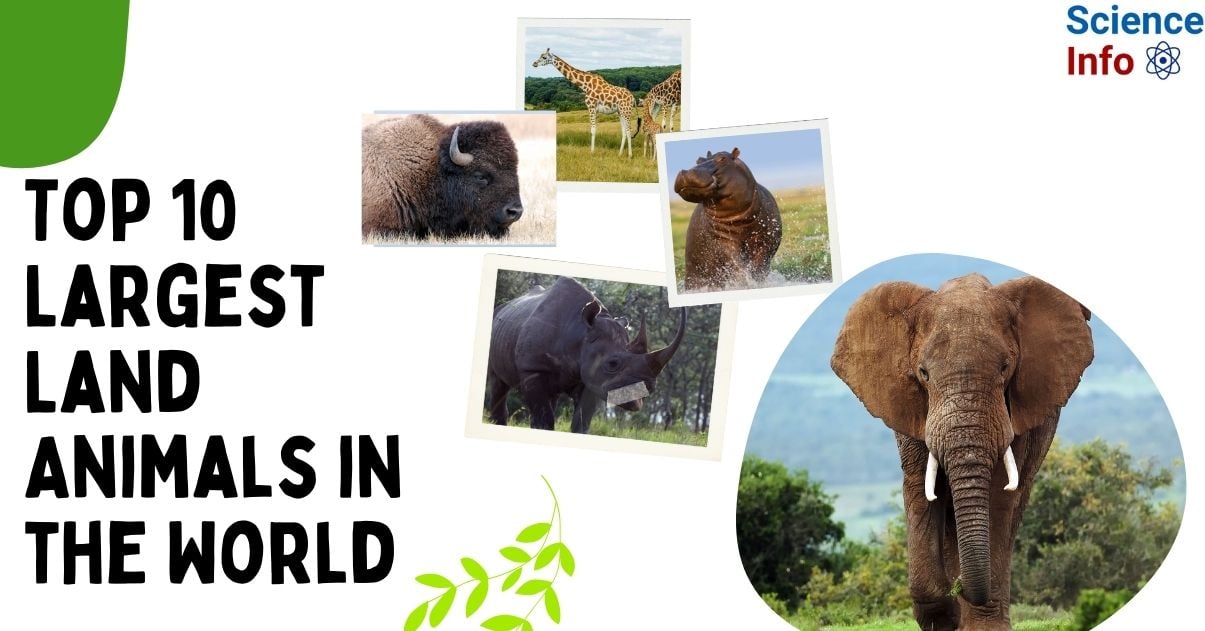
It’s undeniable that certain animals are enormous in relation to others in their class, regardless of the measurement—weight, height, or length. Across history, these enormous animals have been crucial to both natural systems and human cultures, serving as a testament to the diversity and resilience of life on Earth.
We’ve looked far and wide for credible, validated sources and research in order to provide you with the most accurate list of the top 10 largest land animals on Earth. This article offers simple information on classifying gigantic animals according to their sizes.
Interesting Science Videos
Top 10 Largest Land Animals in the World
Here, in this article we are going to take a brief look into the top 10 largest land animals in the world. This list might not be accurate as some individual animals could be bigger in size compared to other in the same species. Let’s dive into the Top 10 largest Land Animals in the World.
10. Bison
A bison is a big bovine from the genus Bison and the tribe Bovine. There are two living species of bison: American bison and European bison. The American bison and European bison (wisent) are the largest living terrestrial animals in North America and Europe. They are typical artiodactyl (cloven hooved) omnivores that resemble other bovines like cattle and real buffalo. They are big and strong, with shaggy long-haired coats. American bison are best recognized for their habitat in the Great Plains, but they once roamed much of the eastern United States and Mexico. Both species were hunted nearly to extinction in the nineteenth and twentieth centuries, but have since recovered.
American bison
- Size: Height 2 meters (6 feet 7 inches); Length 3.5 meters (11 feet 6 inches)
- Weight: 400 – 1,270 kilograms (880 – 2,800 pounds)
- Habitat: America and Parts of Mexico
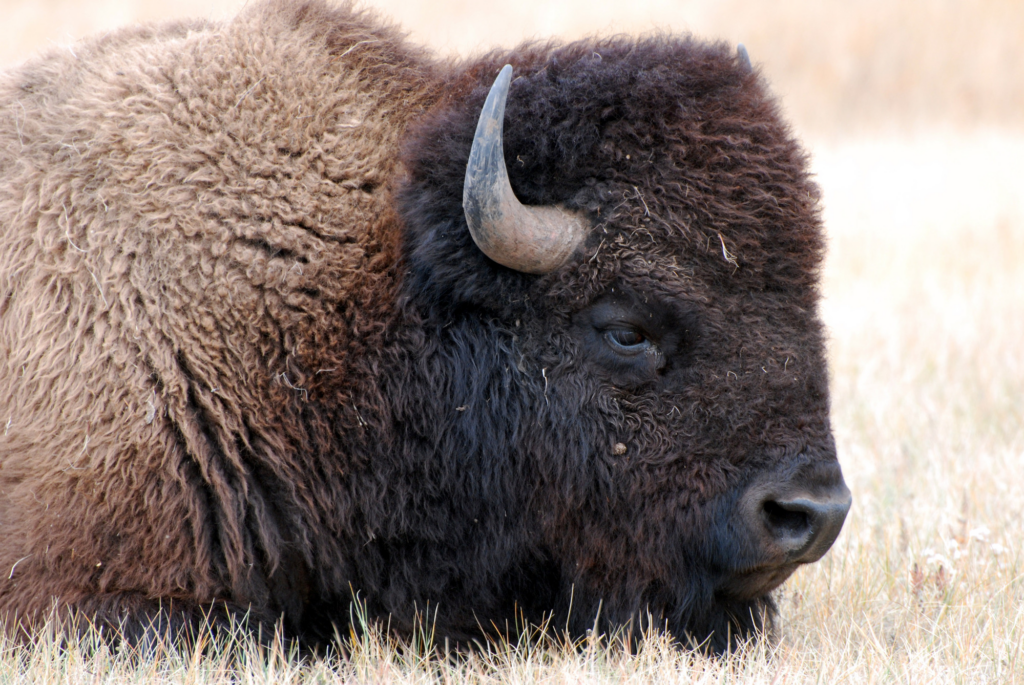
European bison
- Size: Height 2.1 meters (6 feet 11 inches); Length 2.9 meters (9 feet 6 inches)
- Weight: 800 – 1,000 kg (1,800 – 2,200 pounds)
- Habitat: Europe
Bison are ruminants, which can ferment cellulose in their specially adapted stomach before digestion. Bison were formerly considered to only eat grasses and sedges, but they now ingest a wide range of vegetation, including woody plants and herbaceous eudicots. Bison have limited predators due to their large stature. Humans, grey wolves, cougars, grizzly bears, and coyotes are the five notable exceptions. Wolves often kill bison in packs, although there have been reports of a solitary wolf killing bison. At the age of two or three, the bulls separate from the female herds and join a herd of male, which is often smaller than the herd of females. It’s rare for mature bulls to travel alone.
9. Javan Rhinoceros
The Javan rhinoceros (Rhinoceros sondaicus), also known as the Sunda rhinoceros, or smaller one-horned rhinoceros, is one of the five species of rhinoceros that still exist today in South Asia and Africa. It is classified as a critically endangered rhinoceros. Along with the Sumatran, or “hairy,” rhinoceros, the Javan rhinoceros is one of the smallest rhinoceros species. The upper lip of Javan rhinos is long and pointed, which helps them grasp food. The long, pointed lower incisors of Javan rhinos are used in confrontation. Javan rhinos have excellent hearing and smell, just like all rhinos, however they have very weak vision.
- Size: Length 2 – 4 meters (6.6 – 13 ft); Height 1.4 – 1.7 meters (4.6 – 5 ft. 6 in)
- Weight: 900 – 1300 kg (1984 – 2,866 pounds)
- Habitat: Java, Indonesia

Their splotchy grey or grayish-brown, bald skin folds down to the back, rump, and shoulder. The rhino’s skin has an innate mosaic pattern that gives it an armored appearance. Even though Javan rhinos have smaller neck folds than Indian rhinos, they still have saddle-shaped shoulders. The Javan rhino’s primary habitats are grasslands, reed beds, and dense lowland rain forests with lots of rivers, wide floodplains, or damp places with lots of mud wallows. Except for mating pairs and mothers with calves, Javan rhinoceroses are solitary creatures. The herbivorous Javan rhinoceros consumes a wide variety of plant species, with a particular interest in their young leaves, twigs, shoots, and falling fruit. Their expected lifespan is 30 to 45 years.
8. Rothschild Giraffe
Rothschild’s giraffe (Giraffa camelopardalis rothschildi) is a subspecies of Northern giraffe. It is one of the most vulnerable peculiar giraffe groups, with 1,399 adult individuals believed to be living in the wild in 2018. Rothschild’s giraffes are easily distinguished from other subspecies. The most noticeable indicator is the color of the coating or pelt. The reticulated giraffe has very well defined dark spots with bright-white channels between them, whereas the Rothschild’s giraffe is more similar to the Masai giraffe.
- Size: Height 2.9 – 5.88 meters (9.3 – 19. 3 feet)
- Weight: 1100 – 1400 kg (2,425 – 3,086 pounds)
- Habitat: Kenya and Uganda

This is the only Giraffa phenotypic that was born with five ossicones. Two of them are the larger and more visible ones on the top of the head, which are present on all giraffes. The third ossicone is commonly observed in the middle of the giraffe’s forehead, whereas the other two are behind each ear. Rothschild’s giraffes inhabit isolated populations in Kenyan and Ugandan savannahs, grasslands, and arid woods.
Rothschild’s giraffes give birth to a single calf after mating throughout any time of the year and gestating for 14 to 16 months. Males and females (as well as their calves) live separately in tiny herds and only come together for mating. Hyenas, lions, crocodiles, and leopards are among their predators.
7. Black Rhinoceros
The black rhinoceros (Diceros bicornis), also known as the hook-lipped rhinoceros, is a rhinoceros species inhabitants to eastern and southern parts Africa. The black rhino is similar in size to the Javan rhino of Indonesia but smaller than the white rhino. While feeding, it uses its prehensile, pointed upper lip to grab leaves and twigs, while the white rhinoceros uses its square lips to chew grass. In addition to having a smaller head and ears compared to a white rhinoceros, the black rhinoceros can also be separated from white rhinos by its larger size and elevated head position, which indicates that they are browsers rather than grazers.
- Size: Length 2.8 – 3.75 meters (9.2 – 12.3 ft.); Height 132 – 180 cm (52 – 71 in)
- Weight: 800 – 1450 kg (1,763 – 3,196 pounds)
- Habitat: Eastern and Southern Africa
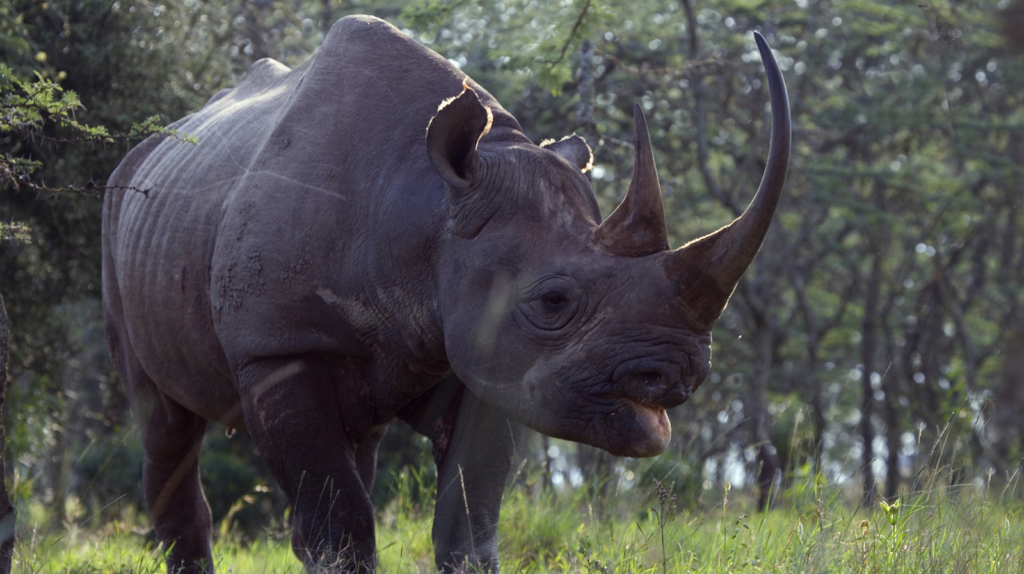
Black rhinos are shielded from sharp weeds and thorns thanks to their thickly covered skin. Ox-peckers and the egret are allowed to consume the external parasite which are hidden under their bodies, which include ticks and mites.
Black rhinos are solitary animals, with the exception of mother rhinos and their young. They are not particularly territorial and frequently intersect with other rhino regions. Dwelling grounds varies with the time of year and the abundance of food and water. The species is classed as severely endangered (but the south-western black rhinoceros is classified as near threatened), and it is threatened by a variety of factors such as poaching and habitat loss.
6. Indian Rhinoceros
The Indian rhinoceros (Rhinoceros unicornis), sometimes known as the greater one-horned rhinoceros, great Indian rhinoceros, or simply Indian rhino, is a rhinoceros species found on the Indian subcontinent. It is the second largest rhino species still living. The skin has pinkish creases and is thick, grey-brown in color. On their snout, they have a single horn that can reach a maximum length of 57.2 cm (22.5 in). They have wart-like bumps all over the shoulders and upper legs. Except for the tail brush, ear fringes, and eyelashes, they are almost completely hairless. Bulls’ neck folds are large. The population of the Indian rhinoceros had been estimated to be around 3,588 as of August 2018.
- Size: Length 3.6 – 3.8 meters (12.07 – 12.47 ft.); Height 1.6 – 1.9 meters (5.3 – 6.3 ft.)
- Weight: 2,070 – 2,200 kg (4,560 – 4,850 pounds)
- Habitat: Indian Sub-continent

Adult males usually likes to live is solitary. However, female with calves or up to six subadults form groups. These groups gather in grazing grounds and wallows. They are most active at night, in the late afternoon, and in the early morning, but they take rest on warmer days. They have rather weak vision, but they have exceptional hearing and smell. With the exception of tigers, who occasionally kill vulnerable calves, Indian rhinos have few natural enemies. The Indian rhino is a herbivore. They eat just grasses, but they also consume leaves, aquatic plants that are submerged and floating, flowers, fruits, and the twigs and branches of shrubs and trees.
5. White Rhinoceros
The white rhinoceros (Ceratotherium simum), also known as the square-lipped rhinoceros, is the largest rhinoceros species to exist today. It has a large mouth for grazing and is the most friendly species of the rhino. The white rhinoceros has two subspecies: the southern white rhinoceros and the considerably rarer northern white rhinoceros. It features a big body, a huge head, a short neck, with a wide chest. Its snout features two horn-like growths, one behind the other. The white rhinoceros has a distinct hump on the back of its neck. Each of the four stumpy feet has three toes. The body’s color ranges from yellowish-brown to slate grey. It has only ear fringes and tail bristles for hair.
- Size: Length 3.7 – 4 meters (12.1 – 13.1 ft.); Height 1.7 – 1.86 meters (5.5 – 6.1 ft.)
- Weight: 2,000 – 2,400 kg (4,410 – 5,070 pounds)
- Habitat: Southern and Northern Africa
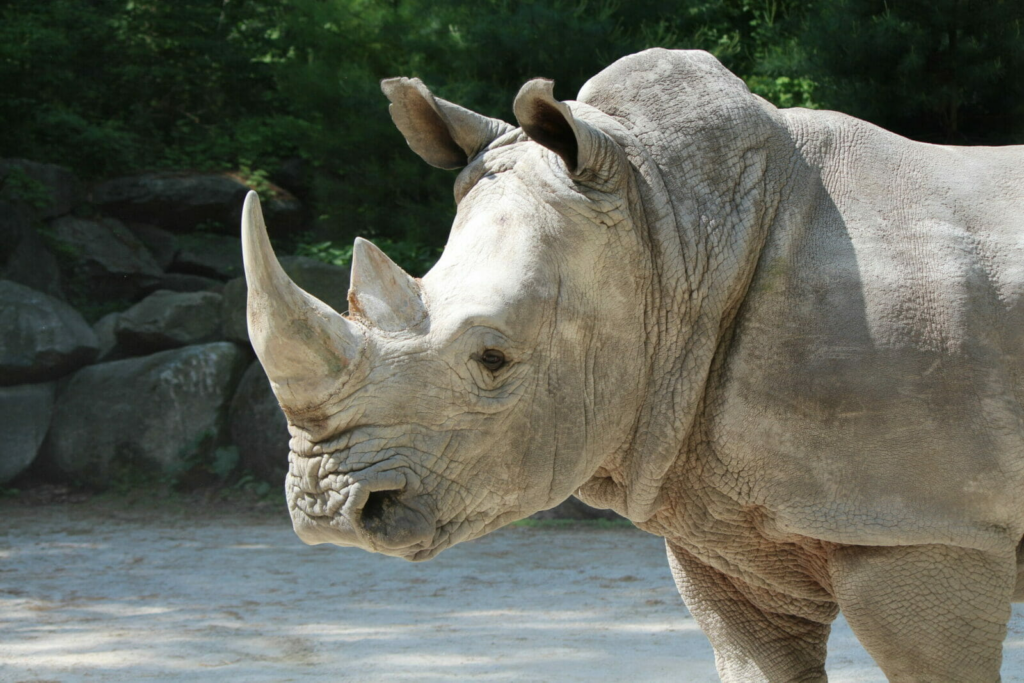
White rhinos are prevalent in grassland and savannah environments. The white rhinoceros is one of the largest pure grazers, eating just grass and preferring the shortest grains. It drinks twice a day if water is accessible, however if the conditions are hot and dry it may last four or five days without drinking. White rhinos, as other rhinos, prefer wallowing in mud pools to cool off. White rhinos dwell in herds of up to 14 animals (mainly cows). Sub-adult bulls gather, frequently with an adult cow. Adult bulls are typically isolated. Adult white rhinos do not have natural predators (apart from humans).
4. Hippopotamus
The hippopotamus (Hippopotamus amphibius), often known as the common hippopotamus, Nile hippopotamus, or river hippopotamus, is a big semiaquatic mammal that is native to Sub-Saharan Africa. The hippopotamus is the world’s third largest terrestrial mammal, following elephant and rhinoceros. Despite their morphological similarity to pigs and other terrestrial even-toed ungulates, hippopotamoids’ closest extant relatives are cetaceans (whales, dolphins, porpoises, and so on), from whom they separated approximately 55 million years ago. Hippos are distinguished by their barrel-shaped torsos, wide-opening jaws with huge canine tusks, almost hairless bodies, and pillar-like legs.
- Size: Length 2.9 – 5.5 meters (9.5 – 16.6 ft.); Height 1.3 – 1.65 meters (4.3 – 5.4 ft.)
- Weight: 2,660 – 3,600 kg (5,864 – 7,936 pounds)
- Habitat: DRC, Uganda, Kenya, Ethiopia, Tanzania, Somalis, Sudan

Hippos live in rivers, lakes, and mangrove swamps. Territorial bulls each rule over a body of water and a herd of five to thirty cows and calves. Hippos stay cool during the day by submerging themselves in water or mud, only surfacing at dusk to feed on grass. While hippos relax close together in the water, grazing is an individual endeavor, and hippos do not often exhibit territorial behavior on land. Hippos live together with a range of huge predators in their habitats. Nile crocodiles, lions, and spotted hyenas are reported to prey on baby hippos. Aside from this, adult hippos are rarely preyed upon by other animals because of their vicious nature and size.
3. African Forest Elephant
The African forest elephant (Loxodonta cyclotis), is one of two African elephant species that continues to exist today. It is indigenous to humid tropical woods in West Africa and the Congo Basin. It is the smallest among the three existing elephant species. The African woodland elephant has grey skin that turns yellow to reddish after wallowing. It is sparsely coated with black coarse hair that measures 20-200 mm (0.8-8 in) at the tip of the tail. It features five toenails on its front foot and four on its back foot. The backside is fairly straight. Its oval-shaped ears have little elliptical tips, and the tip of the trunk has two finger-like structures.
- Size: Height 2.4 – 3 meters (7 ft. 10 in – 9 ft. 10 in)
- Weight: 3,000 – 4,000 kg (6,600 – 8,800 pounds)
- Habitat: West Africa and Congo Basin

African forest elephants are herbivores. Elephants at Lope National Park were spotted feeding primarily on tree bark and leaves, as well as at least 72 different fruits. To boost their mineral intake, they gather at mineral-rich waterholes and lick. The African forest elephant is one of the most effective seed dispersers in the tropics, earning the nickname “mega-gardener of the forest” for its important role in preserving plant diversity. Since they lack strong eyesight, they rely upon the senses of hearing and smell. They can perceive and hear vibrations in the ground, as well as detect food sources using their sense of smell.
2. Asian Elephant
The Asian elephant (Elephas maximus), commonly known as the Asiatic elephant, is a species of elephant that lives across the Indian subcontinent and Southeast Asia, between India in the west to Borneo in the east, and from Nepal in the north to Sumatra in the south. Asian elephant is distinguished by its huge tusk in males, a lengthy trunk with a single finger-like tip, its larger ears folded laterally (but smaller than those of African elephants), and its wrinkled grey skin. Typically grey in color, skin can be covered up by dirt from dusting and wallowing. Unlike African elephants, which have two finger-like tips on their lengthy trunk, this species only has one.
- Size: Height 2.75 meters (9 ft.); Length 5.5 – 6.5 meters (18 – 21 ft.)
- Weight: 3,000 – 4,400 kg (6,600 – 9,700 pounds)
- Habitat: Parts of Indian Sub-continent and Parts of Southeast Asia
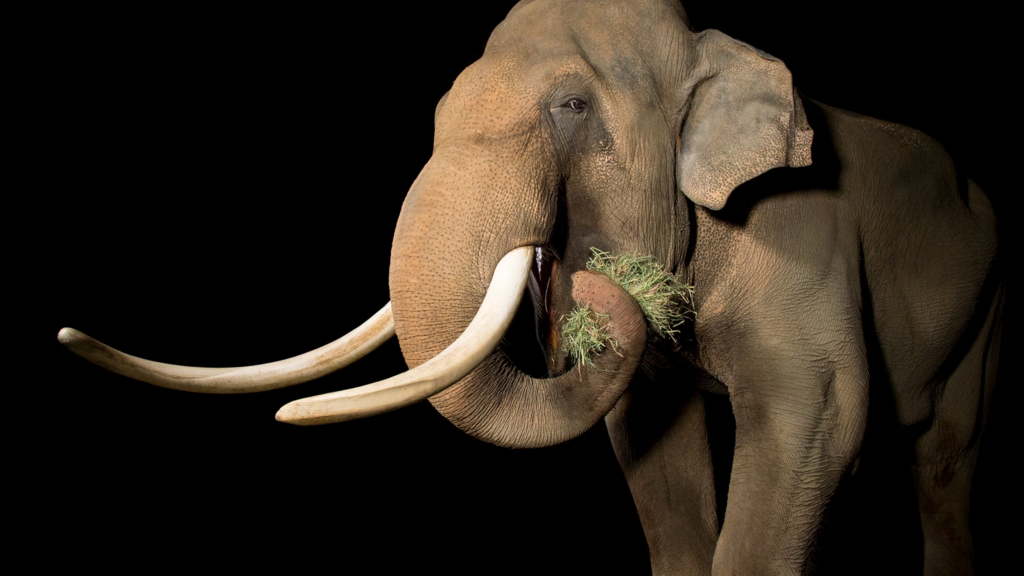
They live in meadows, moist deciduous woods, dry deciduous forests, semi-evergreen forests, tropical evergreen forests, and dry thorn forests. They have been found to consume at least 112 different types of plants, mostly belonging to the Malvales order as well as the families of true grass, legume, palm, and sedge. During the dry season, when it’s cooler, they graze more, and a large portion of their diet consists of bark. They always have access to a steady supply of fresh water and ingest at least once a day.
The loss, deterioration, and fragmentation of the Asian elephant’s habitat are the biggest challenges to the species today, increasing the likelihood of confrontation between humans and elephants.
1. African Bush Elephant
The African bush elephant (Loxodonta africana), sometimes known as the African savanna elephant, is one of two existing African elephant species and one of three living elephant species in the modern world. It is the largest surviving terrestrial creature. It lives in forests, meadows, and woodlands, as well as wetlands and farmland in 37 different African countries. The African bush elephant has gray skin and sparse hair. Its enormous ears encompass the entire shoulder. The African bush elephant’s ears are sharp and triangular. Its huge ears assist to cool the body; flapping them produces air currents and exposes numerous blood veins on the inner sides, facilitating cooling during hot weather.
- Size: Height 3.2 meters (10 ft.); Length 5.5 – 6.5 meters (18 – 21 ft.)
- Weight: 6,600 – 10,400 kg (14,550 – 22,900 pounds)
- Habitat: Most Parts of the African Continent
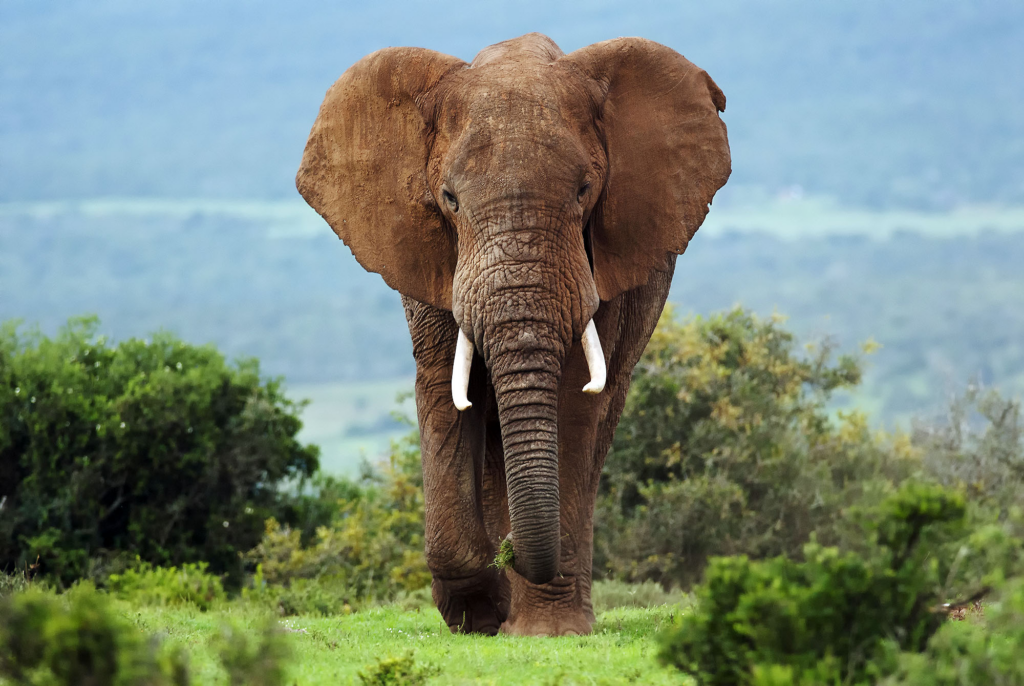
African bush elephants are herbivorous. Its food comprises primarily of grasses, creepers, and weeds. Adults can consume up to 150 kilograms (330 pounds) every day. During the dry season, their diet also consists of leaves and bark. Tree bark, in particular, contains significant calcium levels. To augment their mineral intake, they gather at mineral-rich water holes, termite mounds, and mineral licks. African bush elephants mate during the rainy season. Females are pregnant for 22 months, the longest gestation period of any mammal. The lifespan of an African bush elephant ranges from 70 to 75 years. The African bush elephant is largely threatened by habitat loss and fragmentation caused by the conversion of natural habitat to livestock production.
Conclusion
Most of these measurements are based on researches done by some individuals and it does not imply the accuracy of weight on every individual animals of the species. There are other different factors that can impact of the height and weight such as food, water, or safety. Some individual can grow bigger than others. Who knows researchers out there may find out some new exciting information in near future.
Also Don’t Forget to Check the list of
Top 10 Fastest Land Animals in the World
Top 10 Richest Countries in the World
Top 10 Poorest Countries in the World
Top 10 Happiest Countries in the World
Top 10 Fastest Flying Birds in the World
Video Reference
References
- https://www.app.pan.pl/archive/published/app61/app001362014.pdf
- https://digitalcommons.wayne.edu/cgi/viewcontent.cgi?article=1140&context=elephant
- https://www.ias.ac.in/article/fulltext/anml/097/06/0561-0571
- https://www.researchgate.net/publication/255627988_Inbreeding_outbreeding_infant_growth_and_size_dimorphism_in_captive_Indian_rhinoceros_Rhinoceros_unicornis
- https://sci-hub.ru/10.1016/j.rala.2016.02.003
- https://sci-hub.ru/10.1002/zoo.21308

